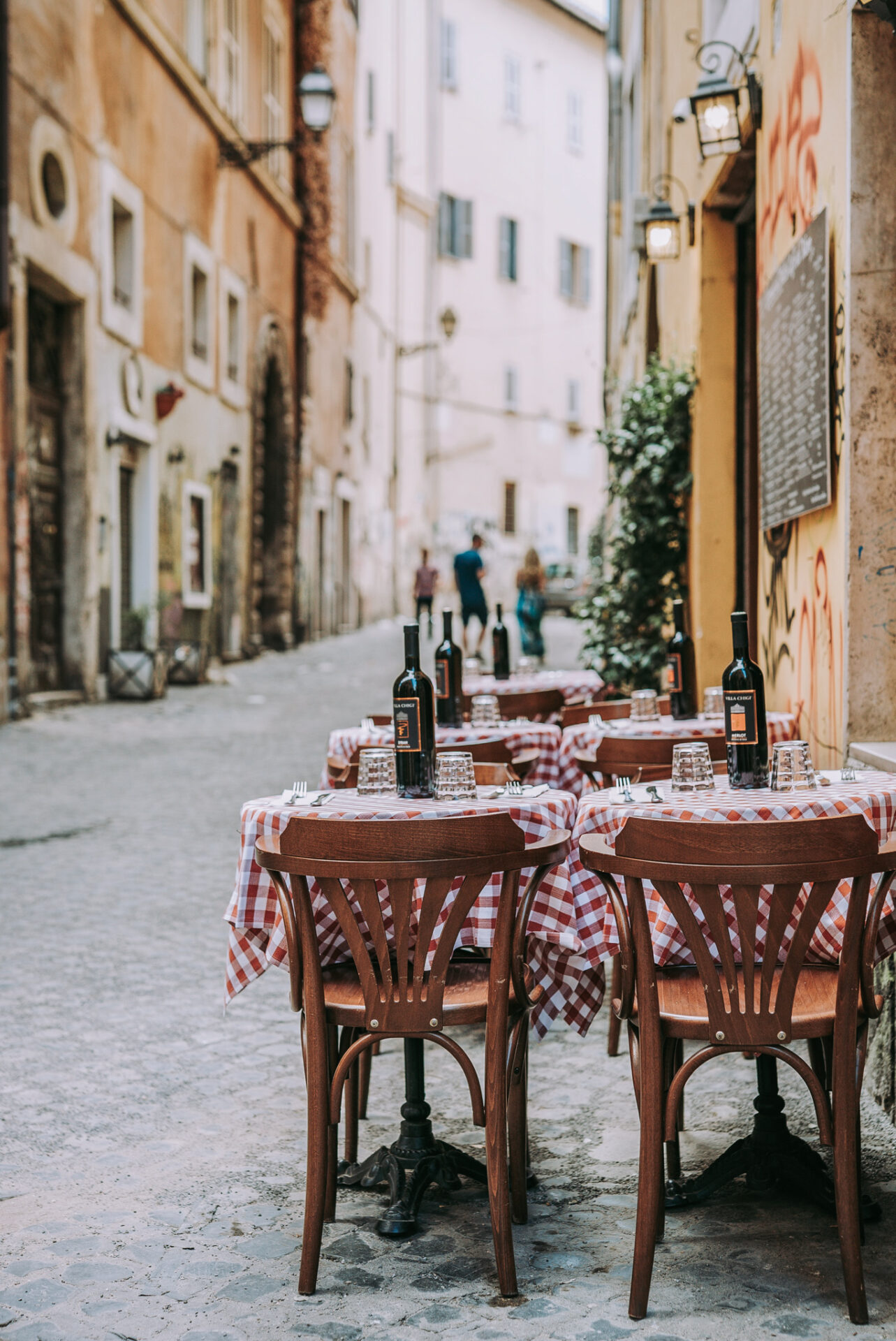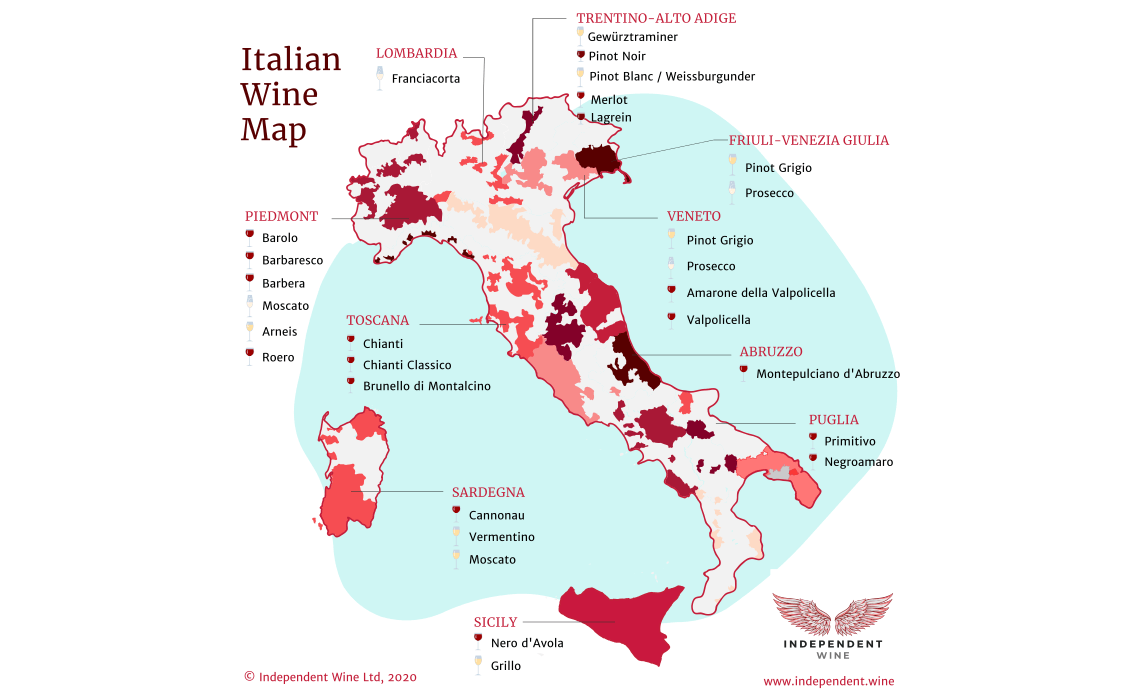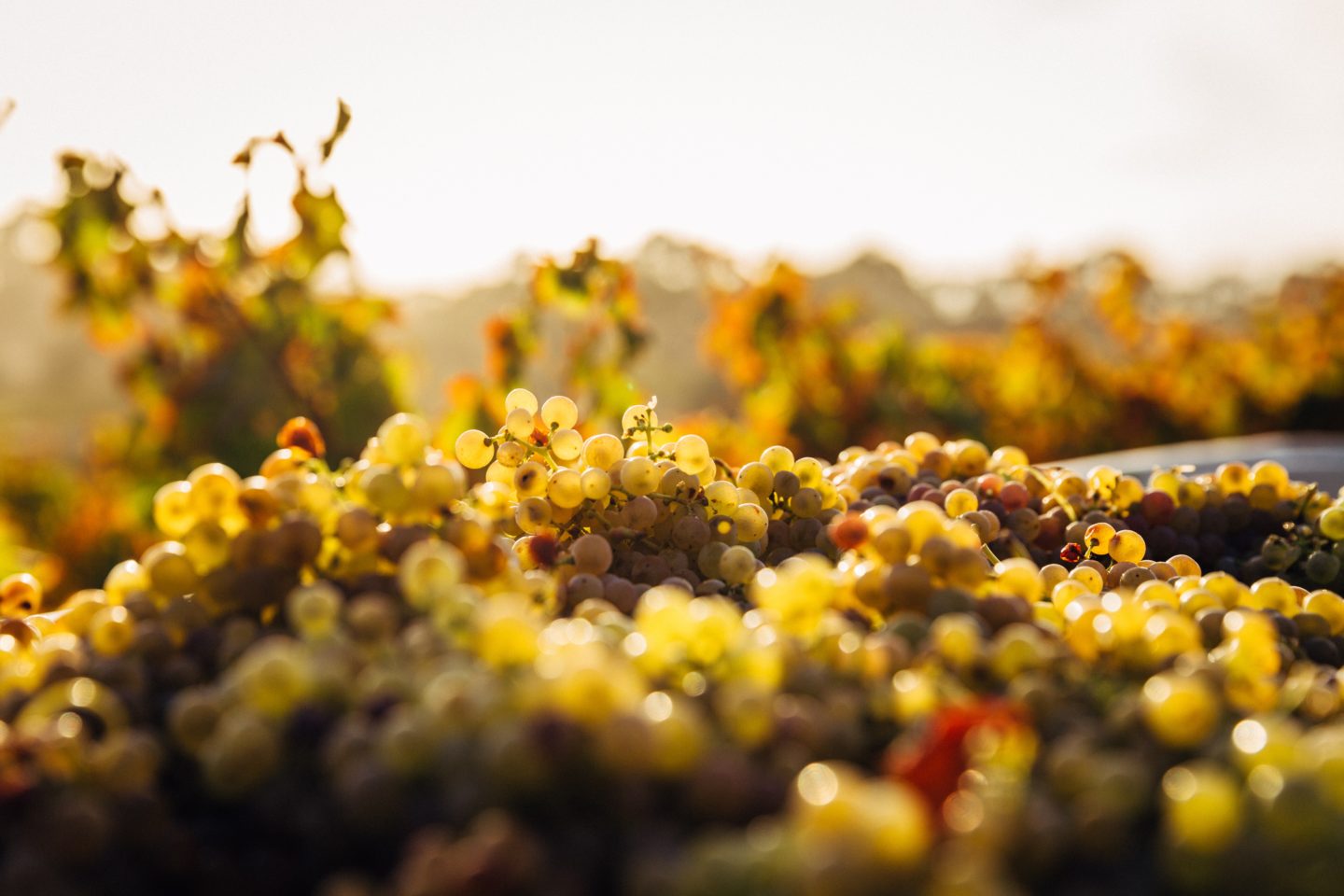
GUEST POST WRITTEN BY HALEY OROPEZA
WWW.ITSHALEYOROPEZA.COM
Italy. Full of diversity, culture, great food, and even better wine. Italy actually has a wider selection of wines than anywhere else in the world! Italian wine is vast and can be a little intimidating to a wine beginner. But, not to worry, I’m here to break it down for you.
How to read an italian wine label
Let’s start with reading an Italian wine label. There’s a hierarchy of Italian wine classifications, and with each step up, the wines come from a more particular place and are bound by more stringent restrictions. Here’s a quick guide on how to understand an Italian wine label:
Vino: A simple table wine. The entry-level of wine classifications. If you order the house red or white in Italy, this is what you’ll get.
IGT: An abbreviation for Indicazione Geografica Tipica. Introduced in 1992, these wine classifications are to follow broad rules about production and what grape varieties are allowed from the area the wine comes from. There are currently 118 IGTs in Italy.
DOC: An abbreviation for Denominazione Origine Controllata. This is the next step up in wine classifications. Rules govern production and style. There are 334 DOCs in Italy.
DOCG: An abbreviation for Denominazione Origine Controllata e Garantita. DOCG is meant to represent the most legendary wines in Italy. Strict rules govern all aspects of production, which includes how wines can be aged, where the grapes can be grown, and what varieties are allowed. There are 74 DOCGs in Italy.

Italian Wine Regions
Italian wine is known and loved for its diversity of styles. And this is because Italy has 20 wine regions! Let’s go over the top five regions you need to know:
Piedmont
Located in northwest Italy, this region sits at the foot of the western Alps. The climate creates the perfect growing conditions for Nebbiolo, a black grape that is used to produce the region’s most famous wines: Barolo (DOCG) and Barbaresco (DOCG).
Tuscany
Located on the west coast, this region stretches across the rolling countryside inland from the Tyrrhenian Sea. For reds, it’s most famous for Sangiovese-based wines. Many wines are labeled as Toscana IGT because they don’t follow traditional production rules. These wines can be 100% Sangiovese or with blends of international varieties like Syrah or Cabernet Sauvignon.
Veneto
Veneto is Rich in beauty, history, and wine. The region offers a breadth of grapes and styles due to their variety of microclimates. It boasts the Alps in the north, Lake Garda in the west, and the Adriatic Sea to the southeast.
Emilia-Romagna
The country’s food capital, and an abundant wine producer. The region is best known for Lambrusco, a sparkling red wine. The white grape, Trebbiano, is another popular grape from the region.
Sicily
The largest island in the Mediterranean. The warm climate and copious amounts of sunshine create the perfect environment for their various, fruity wines.

Italian Wine Grapes
Italian wines are unique, and that’s because there are over 500 grape varieties in the Italian regions. Here are the 10 most common Italian grapes:
For White Wines:
Pinot Grigio
Originated in Burgundy, France, as pinot gris. It now grows extensively in northern Italy.
Glera
A white wine grape variety most famous for its use in prosecco, the sparkling white wine that is Italy’s answer to Champagne.
Trebbiano
A productive grape that produces crisp, light white wines.
Moscato Bianco
The Italian name for the variety is known in France as muscat blanc à petits grains, a light, sweet white wine grape.
Chardonnay
Chardonnay is a French grape that spread throughout Italy in the 1980s, popular for its use in sparkling wine.
For Red Wines:
Merlot
Although not an Italian grape, French Merlot is the country’s third most popular variety. It grows in 14 of Italy’s 20 wine regions, though the Merlot grown in northern Italy is considered the best.
Corvina
A fruity red wine variety is grown in northeast Italy. Here it produces both barrel-aged reds and Amarone Della Valpolicella, which is made from dried grapes.
Primitivo
Primitivo is the Italian name for zinfandel. In Italy, it’s mostly grown in Puglia and can be sold under the name Primitivo or Zinfandel.
Cabernet Sauvignon
Cabernet Sauvignon was introduced to the Piedmont region during the early nineteenth century. It now grows primarily in Tuscany.
Syrah
A relatively recent addition to the Italian wine scene. The French red wine grape gained popularity starting in the 1990s, especially in southern Tuscany.
Are you ready to discover Italian wines for yourself? Book a tour today with Fera Tours! Fera Tours offers all-inclusive trips that focus on experiencing Italy’s passion for hospitality, history, art, and the enogastronomic culture.
Email federicobuonafede@feratours.com with the code “Wine with Paige” before purchasing for 10% off your trip!
